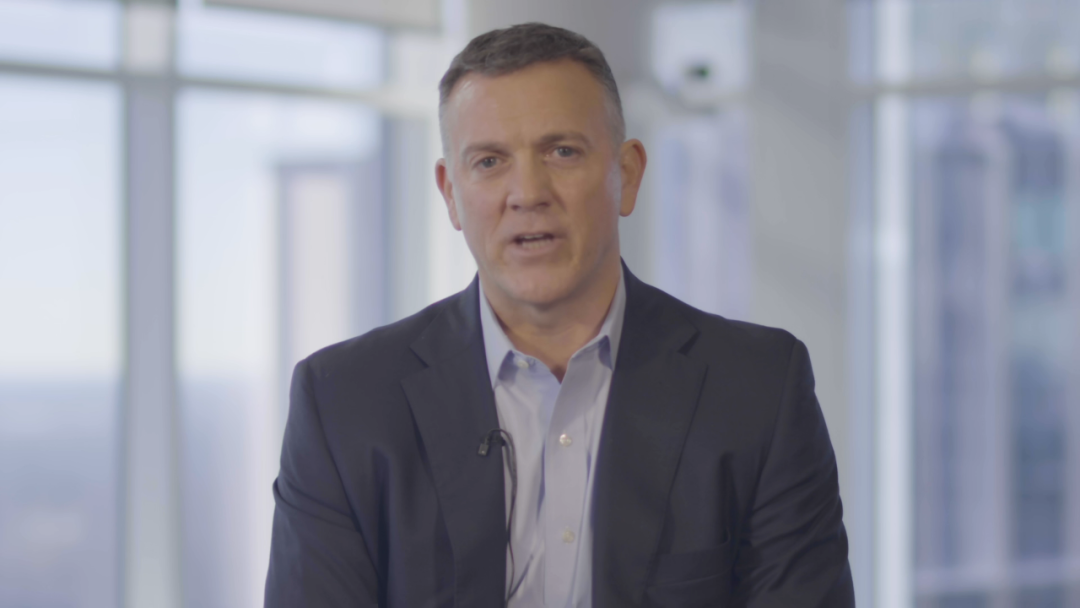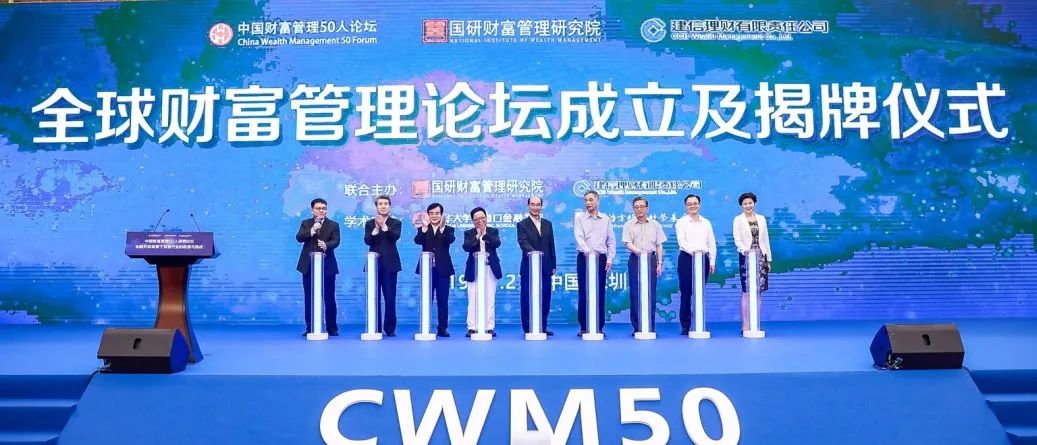霸菱CEO:深挖中国财富潜能,以科技创新引领低碳转型

霸菱主席及行政总裁Mike Freno先生近日出席全球财富管理论坛上海苏河湾峰会时,就霸菱在华展业经验及ESG与科技进步对投资理念的影响发表演讲。
作为一家成立两百多年的全球投资管理机构负责人,Freno先生首先讲述了霸菱在华业务的历史沿革及近期各项展业计划,并基于霸菱扎实的本土化从业经验,梳理出中国资产管理行业的发展前景。Freno先生通过分析发达经济体资本市场历史经验后认为,随着本土个人财富管理需求的日益旺盛,中国构建成熟资本市场最主要的一块拼图已基本就位。此外,Freno先生还提到,霸菱一直注重将科技与日常业务相结合。他以疫情以来霸菱的一系列科技应用实践为例,展示了创新科技的应用显著提升了业务效率,并认为技术创新将是今后投资业绩的主要驱动。最后,Freno先生介绍了霸菱将ESG理念贯彻到全公司的投资生态之中,倡导资本市场参与者以设立净零碳排放目标为切入点,秉承“实干为要,行胜于言”的精神,躬身践行绿色转型这一重大全球化进程。
以下为演讲全文。

霸菱是一家拥有两百多年历史的公司,且我们一直重视中国市场。我们已在中国展业多年,通过QDII,我们与中国的机构客户合作了十多年,形成了非常好的合作关系。我们将致力于继续加深这方面的合作。2018 年,我们在中国设立了一家外商独资实体,正式开始创建我们的在华业务。我们的WFOE设在上海,聚集了许多本地专业人士,他们不仅是霸菱全球投资能力的关键补充,也是我们在华展业所必要的本土化实践。我们的投资人员专业负责中国股票和债券投资,真正满足中国投资者对本地资产的配置需求。尤其令人欣慰的是,作为QDLP管理人,我们在满足额度管理机制的要求下已合规发行了三支基金,我们正计划发行第四支QDLP基金。
霸菱的中国业务历史悠久。随着中国市场的发展,除了继续深耕机构客户,我们也在不断拓展业务条线。霸菱在华业务始于机构客户,为他们提供股票和债券这些传统资产类别的投资管理服务,随后逐渐扩展至更多的另类资产类别。另外,通过QDLP业务的不断壮大,我们看到了中国财富管理和零售领域的崛起趋势,并看好这些领域的未来发展。
显然,除了机构层面,中国的个人资产及财富管理需求也正飞速增长。我们观察到,无论是从资产还是投资者角度,投资需求都正在向创新驱动的赛道倾斜。我们认为创新是最值得关注的领域之一。相比于世界其他地区,中国个人投资者的资产配置需求可能还尚存差距。此前,中国市场上仍以机构投资者参与为主,但最近我们观察到,中国的高净值个人投资者现在对私人财富管理及另类资产的配置越来越感兴趣。基于我们对投资者意愿的判断,随时间推移,中国的投资组合构成及投资策略将与发达经济体逐渐趋同。因此,不仅本地与全球的股票债券这些传统资产类别会被持续关注,越来越多的私人信贷、结构化信贷、私募股权和实物资产都将成为个人资产配置的组成部分。同样,这种趋势已在整个机构市场中演化了几十年,我们现在开始真正看到高净值和一般个人需求也在朝着这个方向加速发展。
我们在全球的所有地区均采用统一的业务模式,力图将霸菱的全球投资经验引入每个当地市场。我们认为,霸菱业务模式的一个标志性做法便是在本土市场设立实体办公室,除了推销产品,还配有本土投资团队。我们与中国市场的合作伙伴携手,依照该模式将我们的离岸投资能力带到中国。我们一般首先与机构投资者合作,将全球各地、多种类型的投资理念本土化。随着市场的不断发展,我们看到服务于高净值个人的机会在不断增加;我们相信,通过科技和市场开放,专业投资服务最终将延伸至个人。
多年来,对科技的投入一直是霸菱业务的一部分。尤其是近两年,当我们应对全球蔓延的新冠疫情时,对新技术的应用确实已改变了企业运营方式。以基金分销为例,对科技的应用正呈加速态势不断深化。得益于大量科技手段的应用,位于美国夏洛特市的霸菱全球总部与中国投资者可以随时沟通,使得客户和投资管理团队之间无缝对接、互通有无。此外,在科技的加持下,我们提高了投资组合中资产配置决策的专业度,打造了为客户实时提供透明化报告的能力,这些都大幅推动了资产管理业务的进步。当然,我认为亚太部分地区在科技运用方面走得更远,也许已超过了西方国家。过去两年,整个行业的业务不但没因社交隔离而导致沟通延迟或合作放缓,相反,科技促进了很多场景下的沟通与合作。
无论是发达经济体还是新兴经济体,谈及投资,投资者们大多会想到的是传统资产类别,中国也不例外。回顾以往经验,投资确实是围绕传统资产类别进行的,有投全球股票的,有投全球债券的。十年前,债券可能还是一种相对较新的高收益资产类别,但是之后资产类别越来越多。随着投资者开始涉猎不动产,可以说资产内涵正不断深刻起来。私人信贷无疑也是一个吸引全球投资者关注并可以满足投资需求的领域,我们认为中国投资者正逐渐关注这些资产类别并开始产生兴趣。
上述这些变化都表明中国市场已开始朝着西方国家那种全门类投资组合逻辑靠拢。我预计这种趋势会继续下去。当我们向中国投资者介绍业务时,我们欣喜地看到大家对各种投资机会的兴趣浓厚,即使某种投资相对复杂,也仍具有很高的接受度。中国投资者对多元投资的接受度及其专业度均令人印象深刻。
数十年来,关注ESG和可持续发展一直是霸菱的业务重点。无论是我们的股票投资理念、看待企业的方式还是对标的进行估值,分析中均采用ESG目标指引下的可持续发展模型,以调整被投企业的成本估算权重。霸菱是首家为中间市场提供加入ESG考量的单一混合利率贷款机构。毫不谦虚地说,将ESG纳入投资流程,我们确实是最先吃螃蟹的人之一。我们相信,可以通过合作来解决随ESG目标而来的挑战,而不是无能为力地剥离资产。通过参股企业来引导他们做正确的事,通过向应对气候变化的技术进行投资,帮助我们应对气候挑战。我们将ESG与投资实践相结合,逐渐得到中国市场对我们在ESG方面的高度认可。除了霸菱自身,我们从可持续合作的角度将ESG理念润物细无声地贯彻给我们的客户、投资组合相关方、借贷机构,以及我们参股或控股的众多企业。我们发现,包括最近几年的中国市场在内,可持续的包容性合作理念已在全球范围内开始大受欢迎。
我认为,科技是真正能产生重大影响的另一个领域,它不仅帮助我们提升业务运行效率,也确实有助于我们实现ESG目标。诚然,我认为线下的社交关系无可替代,也希望随着时间的推移,全球疫情好转,我们可以恢复往日那种面对面的交流。但另一方面,随着科技进步,通过Zoom、Microsoft Teams以及视频会议系统供应商的努力,与客户进行线上的无缝沟通和对话不仅提升了业务效率,还有助于我们持续推进实现ESG目标。实际上,我们在推动自身ESG目标方面已经采取了一些实际行动:最近,我们通过购买碳排放额度的方式实现了今年净零碳排放。节能减排,我们是认真的。我认为,通过技术实现与客户的线上互动,将有助于减少因商务差旅造成的碳排放。
与许多同行们一样,其实商务差旅产生的碳排放最多。除了彻夜灯火通明的办公楼以及动辄就得跨洋飞行的商务差旅之外,与我们日常业务直接相关的碳排放微乎其微。因此,如果我们能减少差旅次数,我们可能会更快地达成ESG目标。霸菱决心率先在2030年实现净零碳排放。

Speech at GAMF 2022
Shanghai Summit
Mike Freno
Barings' history in China goes way back. We're a company that's well over 200 years old, and while we've evolved and changed as a company over that period of time, our commitment to the region has not. We have been operating in the region for many years. We've actually been operating within China under the QDII with our institutional clients for over a decade. It's one that we've found great partners in that region, and will continue to invest and commit to that. In addition, in 2018, we set up a Wholly Foreign Owned Entity to establish our presence officially within China. We are located in Shanghai with a number of professionals that are there to really compliment not only the global investment capabilities that we had, but we're also looking to leverage the local capabilities. We've put investment professionals there to really tap the market in demand for Chinese investors, looking at both local equities and local bonds. We have three funds currently under the QDLP and the quota system, three separate products that we're very excited about. In addition, we're in the process of planning for our fourth.
Our long history there, both on the institutional side, and I think as we've seen that market evolve, we've also evolved. First starting with institutional clients, offering them traditional asset classes on the stocks and the bonds, and then going into more alternative type asset classes. And we're seeing the same thing and we would expect the same thing to hold true on the wealth side, as well as the individual side. And we're seeing that really manifests itself through the QDLP allocations that we have.
It's very evident China continues to grow at a very rapid pace in terms of its assets under management and the amount of wealth that is being established within the country, not only at the institutional level, but certainly at the individual level as well. What is increasingly apparent to us is not only the growth from a number of assets standpoint, but the growth and the sophistication of the investors to evolve to new and innovative products. That continues to be one of the areas that we think is most notable. It may be that China's a few years behind the rest of the globe in terms of its demand for certain products, predominantly on the private side. Again, institutions have been in this market for a very long time, but I think now as we start to look at the wealth markets and in the individual markets, the desire to have more private and alternative assets within a portfolio is becoming more and more apparent. It's our thesis that over time, China will in terms of its portfolio composition, if you will, of strategies, look very much like the rest of the world. And so there will be a compliment to not only traditional asset classes, be the stocks and bonds, both domestic and global, but also we'll start to see more and more private credit, more and more structured credit type investment classes, more and more private equity and more and more properties, both on the debt and equity side, finding their way into individuals portfolios. Again, this has been seen throughout the institutional space for many decades, and we're now starting to really see an acceleration in that demand from the wealth channels, as well as the individuals.
For all the regions that we operate in, we run a consistent model. We really try to take our global capabilities and bring them into local markets. We do think a hallmark of that is maintaining a presence in all the local markets that we operate in. And that's not just a sales or distribution office, but that's going to be investment professionals as well. And throughout our history, we have been partnering in the Chinese markets to bring our offshore capabilities into the local market. Bringing cross border ideas, wherever they may be, wherever the opportunity sets is, moving them into the market and participating and partnering predominantly historically, again, with institutional investors. But as we're seeing more and more changes in the market, we're seeing that partnering with wealth channels and we ultimately believe through technology and through access to the market, we'll begin to see that for individual investors specifically.
Technology has been a part of business for many years, and I think with the most recent two years, and certainly as we deal with the global pandemic, the reliance on technology and the capabilities of technology have really changed how we operate. From a distribution standpoint, we haven't really seen a slowdown. We're able to distribute and we're able to speak to investors in China from our head global headquarters in Charlotte and the amount of technology that's there allows for almost a seamless discussion between client and investment management. Moreover, the amount of technology and the sophistication we have in the ability to make portfolio asset allocations decisions, the ability to provide transparency to our clients in terms of reporting on a quick and real time basis, is all part of the technology that's allowing the asset management business to continue to move forward. Certainly, parts of Asia-Pacific I would argue are much further along in their adoption of technology, maybe than more so in the west, but it's been a welcome sign to see over the last two years that we really, as an industry and as business, have not seen things slow down in the dialogue, in the conversations, and the partnerships with clients has not been prohibited because of a lack of distance and not being able to meet face to face, but actually accelerated in many cases because of the technology we're implementing.
Many times you think about the historical asset classes where we've penetrated the market and we've participated and partnered in the market and China's no exception to that. It's really been, historically, around your traditional asset classes. It's been your global equities. It's been your global fixed income. Fixed income may have been a relatively new asset class a decade ago to many investors, but we're starting to see more and more of that and you're actually seeing the evolution of things that were traditionally called high yield. We're moving into more, we'll say, esoteric type asset classes when you look at real estate allocations. Private credit is certainly one that has had a lot of attention and a lot of demand on a global basis. We're seeing no exception (on interest) to that in the Chinese market.
All of these are starting to look more like a complete portfolio that we've seen in the Western world. And I would expect that trend to continue. And we're really impressed with the adoption and the level of sophistication by the Chinese investors, as we introduce more and more opportunities to them. The interest in these and again, the receptivity and the level of sophistication is really great to see.
ESG and sustainability has been really a hallmark of the way Barings has managed assets for many decades. Whether you go from our equity approach, the way we look at and how we evaluate and assess companies, we employ a higher cost or a lower cost of capital in our analysis to companies whose behavior we think fits within, we'll call it, the ESG/sustainability type model to even moving to being the first investor to provide middle market unitranche ESG linked lending facility. You know, we were really one of the early adopters in that. Our philosophy has been over time is to partner. We are looking for engagement as opposed to divestment necessarily. We believe that the challenges that we face under the ESG heading are going to be solved by partnerships and by investment and not divestment. Investing in companies to do the right thing, investing in technology to help advance the climate challenge that we have. We have really approached this and we've seen a lot of acceptance from the Chinese market in this and how our approach is to ESG. That is a partnership. Not only with us as asset manager and our clients as the investor, but also our portfolio companies, those that we lend to, those that we invest in, those that we own, and really looking at it from a collaborative standpoint. We've seen this approach be well received throughout the globe, and most recently in the Chinese market.
I think another area where the technology is really having a big impact, and certainly helping our business from an efficiency standpoint, but also really helping with the ESG goals that everyone is setting. I don't think we can ever replace the face to face meetings and the relationships that you build through face to face meetings and one on one meetings and things that take place. Hopefully over time those will come back as the situation around the global allows, but the technology advances we've had, the seamlessness and dialogue and ability to talk to clients quickly through Zoom, through Microsoft Teams, through all the video conferencing that we have not only allows for a more efficient business, but also helps us sustain our goals from an ESG standpoint. We've taken steps in the near term, actually, to be net zero from a standpoint of purchasing carbon credits in the current year. This is something we're committed to. I think the amount of technology that we are allowed to use, and the amount of technology that is allowing for interaction with clients will help assist in that as we reduce our travel.
Because we, like other asset management and financial services companies, the largest carbon impact we have is really on our travel. Our businesses tend not to have many other things that are carbon emitting outside of our buildings and our travel and therefore if we can reduce the amount of travel, we are much more likely to reach our goals, in Barings case, of net zero in 2030.
全球财富管理论坛

全球财富管理论坛是在金融开放背景下,为顺应全球资产管理行业发展与中国资产管理行业转型需求,由清华大学经济管理学院、孙冶方经济科学基金会、中国财富管理50人论坛联合发起成立的一个国际性交流平台组织,论坛旨在构建一个汇聚全球资产拥有者和管理者、监管部门和市场代表的长期对话沟通平台,为国内外资产管理机构搭建交流与合作的桥梁。

